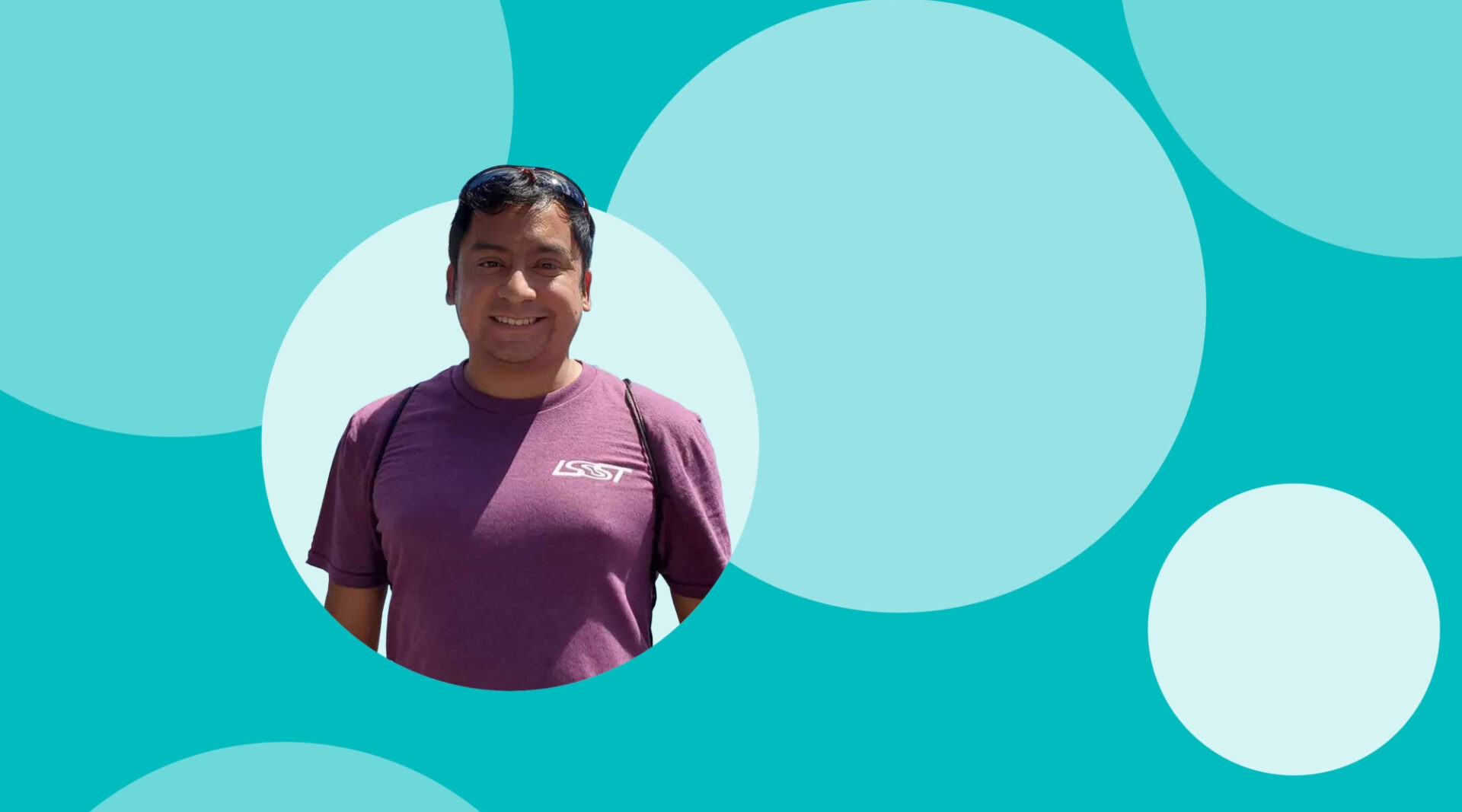Adam Snyder
he/him
Adam is a postdoctoral researcher at the University of California, Davis (UC Davis) who is part of the team building Rubin Observatory’s giant digital camera.
Highlights
Studies phantom echoes in images caused by bright objects, called ghosts
Is an adopted Indigenous Maya from Guatemala
Found his birth family through a 23andMe DNA test
When Adam Snyder first realized he liked physics, he didn’t expect he’d end up studying ghosts. Not that kind of ghost—Adam’s ghosts have to do with the sensitive electronics in astronomy camera detectors.
Adam is a postdoctoral researcher at the University of California, Davis (UC Davis), where he’s part of the team building the sensitive, giant camera Rubin Observatory will use to complete the Legacy Survey of Space and Time (LSST). He works to understand how signals from different parts of the camera’s detector electronically mix with and interfere with each other, which can cause false echoes in other parts of the image called electronic ghosts. This interference effect is called crosstalk, and scientists need to correct for it when they’re processing the images in order for Rubin science to be the best it can be.
So what causes crosstalk? Imagine you’re in a room with a bunch of people all talking on their phones. If everyone talks quietly, each can hold their conversations without any interference. But now imagine that a couple people talk loudly, and the person you’re talking to complains that they’re distracted by the other conversations. This is the basic idea behind crosstalk!
In the LSST camera, each of the 189 light-sensitive charge-coupled device (CCD) chips converts light into electronic signals that get transferred to a computer, or read out, once the image is taken. For LSST, this readout has to happen incredibly fast (in less than two seconds), so the camera engineers divided each CCD chip into 16 sub-chips, and all of the 3,024 sub-chips get read out at the same time. So is this like having 3,024 people in a room? Thankfully, no: “The work I did in graduate school showed that it's really only the subsections of the CCD that talk to each other,” Adam says. Going back to our room of phone conversations, that means each CCD is like its own room, and each of the 16 sub-chips is like a person on their phone. If one sub-chip “talks” too loud—that is, has a bright star or other source like a satellite streak—that signal can appear in the other 15 sub-chips as a ghost. Crosstalk must be corrected during image processing, but applying an imperfect correction would make doing science with the images more difficult. Adam’s current project focuses on measuring exactly how strong the crosstalk effect is depending on how bright the initial source was in the image so scientists can correct for it as best as possible.
Measuring camera detector crosstalk wasn’t exactly what Adam envisioned he’d be doing when he decided to pursue physics, but he did always know that he enjoyed hands-on work. After his undergraduate degree at the University of Illinois, he started his graduate studies at Stanford by rotating among a few different projects before landing with the LSST Camera group just as they were starting to ramp up construction. “When I first started, there was literally nothing in the clean room…now it’s filled to the brim with equipment,” he says. “I want to know what they’ll do with the giant warehouse clean room once they’re done with the camera!”
Adam has an American accent, but that’s because he was adopted when he was just a year old. He was born to an Indigenous Maya family in Guatemala, and his journey to reconnecting with them has taken some unexpected turns. “I was waiting until I was done with school to go there and find them, and I was trying to figure out where to start. I took a 23andMe DNA test because my friends were all doing it,” he recalls. “I thought maybe I’d find a third cousin or something and they actually found my half-sister.” And it turned out that his half-sister, who had been adopted to a different family, had been in contact with their birth family for years! “It went from zero to sixty immediately,” he laughs. “It was like ‘here’s your family and here’s a bunch of cousins.’ I got to meet them and it was great.”
Adam’s experience meeting his birth family encouraged him to continue exploring and reconnecting with his Indigenous roots. “Another reason I’ve embraced being Indigenous is because I’ve met other adoptees,” he says. “Many are successful, others are struggling to find their way, there are just so many questions when you grow up as an adoptee.” Adam hopes that by sharing his story and “all the cool stuff [he] does at work,” he can be an inspiration for others like him. To anyone hoping to follow a similar path, he offers this advice: “Read scientific articles and find something that sounds cool because there is so much cool science being done—we need smart people to work on this stuff!”
Lightning round Q&A: Get to know Adam better!
If you could travel back in time to any period, what period would you go to?
I would like to go back to the heyday of the Mayan empire.
What meal could you eat for a week straight?
My favorite meal is pizza.
What animal would you swap places with for a day?
My favorite animal by far is squirrels, I love watching them.
If you could have any job other than what you’re doing, what would it be?
Those Twitch streamers playing video games all day seem to live quite the cushy lifestyle!
What is your most-used emoji?
The thinking face emoji 🤔

